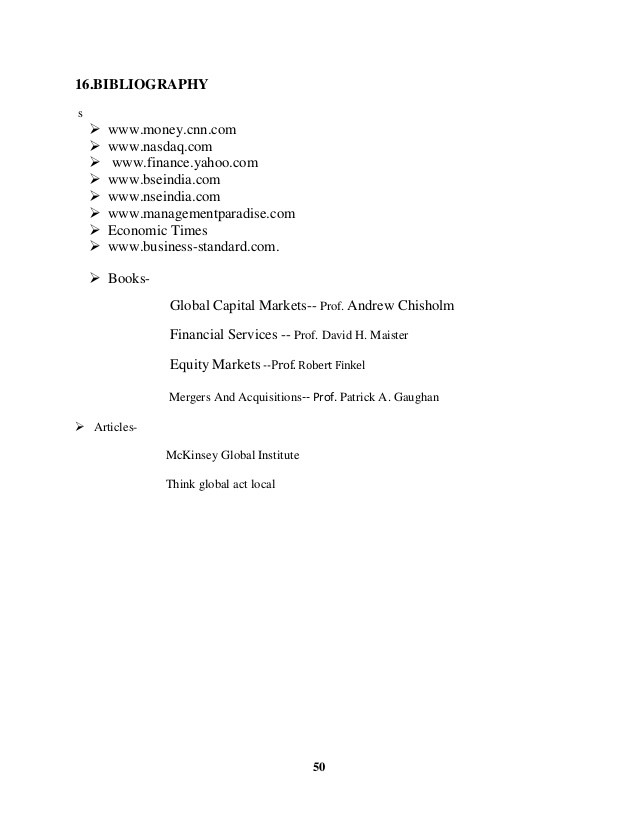A Fresh Look At The Financial Markets Yahoo India Finance
Post on: 4 Апрель, 2015 No Comment

The financial services industry offers a vast array of investment products across a wide number of financial markets. Accordingly, investors are faced with a nearly overwhelming selection of potential investments. It is important for investors to review the landscape and evaluate the opportunities to identify the market most suitable to their abilities, personality and investment goals. The first step is to look closer at the major financial markets.
The capital markets are the first place most investors look when considering potential investments. The basic categories of investment choices include stocks, bonds, mutual funds and exchange traded funds (ETF). Implementation options vary widely in terms of variety and strategy, and plenty of information is available about these investments on the internet.
Many private investors’ first foray into the capital markets is through the stock market. It’s relatively easy to understand, features many recognizable companies associated with familiar products, is readily accessible and has a high trading volume, which creates liquidity that allows investors to get in and out with relatively little hassle. The global market consists of more than $54 trillion worth of stocks as of the end of 2012, with an excess of 46,000 stocks to choose from, according to the Paris-based World Federation of Exchanges.
A bond is a type of debt security that can be bought and sold by investors on credit markets around the world. The bond market is larger in nominal terms than the world’s stock markets. Bonds are generally regarded as passive, low-risk, low-volatility investments. This market also has correspondingly low returns compared to the stock markets when examined over long time periods.
The global bond market encompassed around $80 trillion in 2012, according to The Bank of International Settlements (BIS), with the exact figure varying depending on the source and calculation methodology. That’s almost double the size of the stock market. It encompasses a variety of bond types, including corporate, sovereign and municipal bonds, and crosses the quality spectrum from high quality to “junk.”
Mutual funds are made up of a pool of cash collected from many investors. The fund manager uses these funds to purchase a portfolio of stocks, bonds, money market instruments and similar assets on the investors’ behalf. Each share represents an ownership slice of the fund and gives an investor a proportion of the securities pool based on the amount of money invested. In many ways, mutual funds offer novice investors the easiest, most convenient way to begin investing. They provide convenience and even professional money management at a reasonable price. There are mutual funds that invest in stocks, mutual funds that invest in bonds and mutual funds that combine both stocks and bonds.
With the purchase of a single mutual fund, investors can diversify their portfolios across multiple industries and/or sectors without the need to spend time analyzing securities or developing complex asset allocation strategies. They also offer a choice of active or passive management, with the former providing access to the skills and insights of some of the world’s best money managers, and the latter providing a reasonable chance of generating returns that match the overall market.
The many benefits associated with mutual funds have helped them bring in a tremendous amount of money. According to the Investment Company Institute, the mutual fund industry has attracted $26.8 trillion in assets worldwide, with the U.S. mutual fund market accounting for the lion’s share at $13 trillion as of year-end 2012.
Exchange Traded Funds
Exchange traded funds (ETFs) have only been around since the early 1990s, but they have quickly become popular with investors. With close to $2 trillion in assets as of year-end 2012, and no sign of their popularity waning, ETFs offer many of the same benefits that mutual funds provide. They cover a broad range of strategies and markets, include both active and passive strategies and cost far less than most mutual funds. While mutual funds and ETFs have many differences under the hood, they are largely technical details of little concern to most investors. The key differences are that ETFs tend toward passive management and have lower expenses.
Beyond the Capital Markets
The high level of private investor participation, varied product offerings, limited margin and extensive government regulation all combine to make the capital markets a reasonable place for non-professional traders. But with this limited risk comes limited profit potential — this is a classic example of the risk-return tradeoff. This is partly because there is often a physical limitation to how fast a company or economy can grow and partly because of the reduced leverage available. For example, most private investors are restricted to borrowing no more than 50% of the face value of their stocks in a margin account. Investors who are willing to take bigger risks in pursuit of greater returns often look to other venues, including the commodities and derivatives markets.
Trading opportunities in the commodities market run the gamut from gold and oil to soybeans, wheat, coffee, cotton and cattle. There are currently about 50 major commodity markets worldwide that facilitate investment trade in nearly 100 primary commodities, including hard commodities (natural resources that must be mined or extracted such as gold, rubber, oil, etc.) and soft commodities (agricultural products or livestock such as soy, wheat, coffee, sugar, etc.).
Buyers who wish to take physical delivery of the purchased commodity trade in the “spot” or cash market. They pay in cash, on the spot with the amount paid based on the current market price. These buyers have the facilities to hold vast quantities of physical commodities, whereas the average investor has no place to store 10,000 bars of gold, 50,000 head of cattle or 100,000 barrels of oil.
The cash market is complex and delicate, and generally not suitable for inexperienced traders. The cash markets tend to be dominated by so-called institutional market players such as hedge funds, limited partnerships and corporate investors. The very nature of the products traded requires access to far-reaching, detailed information and a high level of macroeconomic analysis and trading skills.
It is vital that any private investor wishing to trade within these markets take the time to gain experience and understanding of the market before risking capital. A viable alternative is to invest in stock of companies that work in the commodity industry (timber, mining, etc.). It can also be done through mutual funds or ETFs that specialize in commodities (gold for example) or commodity-related businesses.
The data below provided by Barclays Capital shows the top 12 traded commodities and the estimated value of the physical market for 2010.
Barclays Capital

The derivative is named so for a reason: its value is derived from its underlying asset or assets. A derivative is a contract, but in this case the contract price is determined by the core asset’s market price. If that sounds complicated, it’s because it is.
Examples of common derivatives are forwards, futures, options, swaps and contracts-for-difference (CFDs). Not only are these instruments complex, but so too are the strategies deployed by this market’s participants.
There have been some spectacular and highly publicized institutional losses in the derivatives market. American political and regulatory bodies have demonstrated their concern about the exploitation of derivative instruments — and, as a result, the exploitation of investors.
Many derivatives, structured products and collateralized obligations also are available, mainly in the over-the-counter (non-exchange) market, which professional investors, institutions and hedge fund managers utilize to varying degrees but play an insignificant role in private investing.
The chance for high reward attracts individual investor interest; however, many would do better to choose professionally managed investments that delegate decision marking to experienced investment professionals. Complex derivative investing requires a high degree of analytical and mathematical skill as well as a broad macroeconomic understanding. The derivatives market adds yet another layer of complexity and is therefore not ideal for inexperienced traders looking to speculate.
That noted, the desire for more reliable returns and better risk management is driving innovation in this market. Mutual funds and ETFs are employing derivatives in ways that are less speculative and more focused on the delivery of more consistent, reliable investment returns. Investors seeking portfolios that use derivatives can look to products such as “risk parity” mutual funds, a type of fund that allocates money based on risk.
From a size perspective, as of the end of 2012, the gross market value of over-the-counter derivatives was estimated to be $24.74 trillion, according to the Bank for International Settlements (BIS).
The Bottom Line
Investors have many choices for deploying their capital. These investments have varying levels of complexity and offer everything from do-it-yourself research to complete delegation of nearly every aspect of the process. With so many choices and decisions to make in an ever-expanding marketplace, investors have more reasons than ever to look before they leap. Time invested in learning about where your money will go and how it works on your behalf is time well spent.
More From Investopedia














